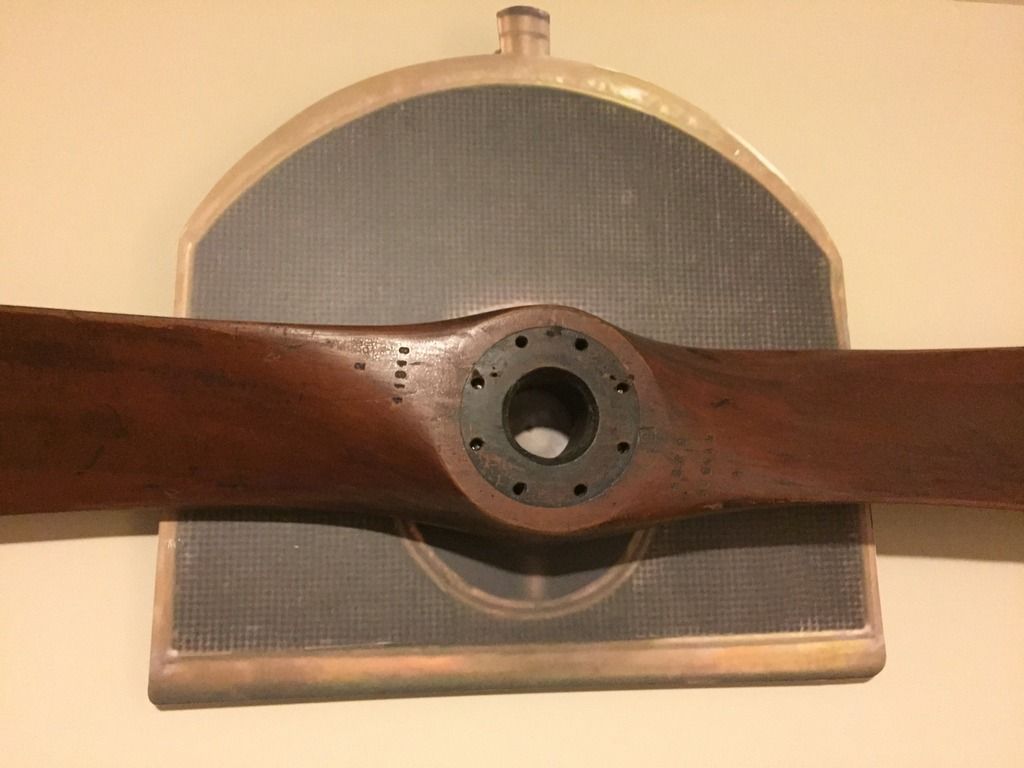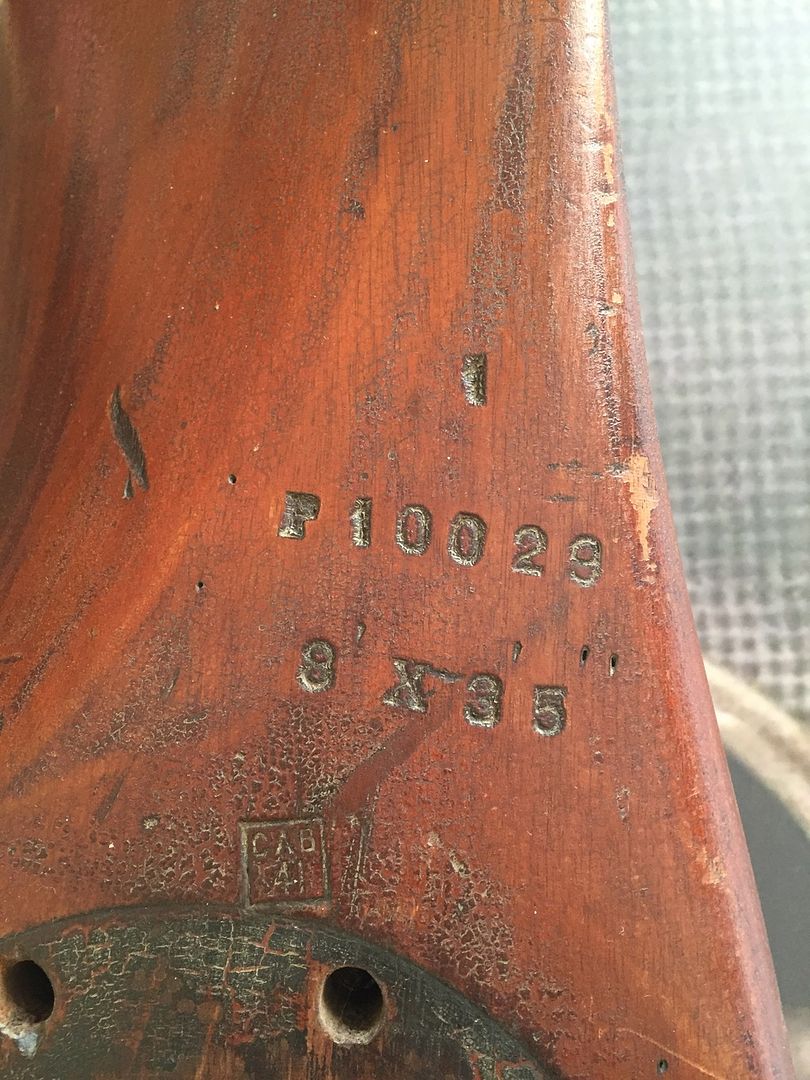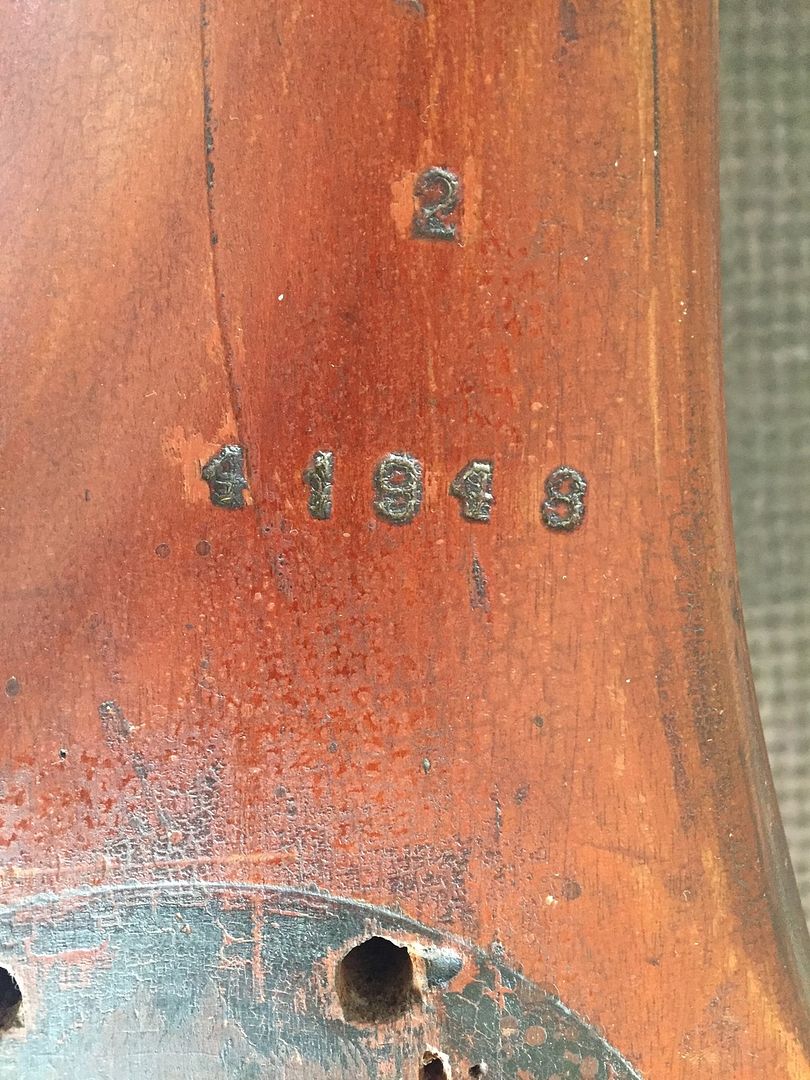Hello all,
I have a possible JN-4D Curtiss Jenny Propeller in my possession. I worked with the Curtiss Museum back in February to get a mock image of the grill, which we then applied to a cut-to-shape piece of aluminum. We then mounted that to the prop using the original hub and some bolts. It came out looking beautiful, as you can see in the pictures below.
Sadly though, I may be interested in selling this propeller. For some background on myself, I am a USAF Active Duty Captain currently in Pilot training. Prior to this I was an F-15E WSO, flying over 1,000 hrs (around half of them combat) with the 336th World Famous Rocketeers. I am now in the "front seat transition" as we WSO's call it, and looking to be possibly an F-35/22/15E pilot post training.
I am getting engaged soon, and would like to use the proceeds of this propeller towards my engagement ring for the love of my life (she's also an AD AF Capt). Please back up my claims if you know anything more about the propeller and markings, and if you are interested in the prop let me know! I would love to chat about this piece of flying training history. It currently resides with me at my house in Oklahoma.
Here's an excerpt from the email that the Curtiss Museum sent me:
Greetings,
Back in February of 2015, I helped your father with his project in creating the radiator backdrop for the propeller. As I had told him, we were unable to positively identify it other than it was used with a Curtiss OX-5 engine. As these were used on a variety of different aircraft at the time we could not specifically say what aircraft it was for but most likely came from a Curtiss JN-4D training plane.
Sincerely,
Rick Leisenring
Curator
Glenn H. Curtiss Museum





I have a possible JN-4D Curtiss Jenny Propeller in my possession. I worked with the Curtiss Museum back in February to get a mock image of the grill, which we then applied to a cut-to-shape piece of aluminum. We then mounted that to the prop using the original hub and some bolts. It came out looking beautiful, as you can see in the pictures below.
Sadly though, I may be interested in selling this propeller. For some background on myself, I am a USAF Active Duty Captain currently in Pilot training. Prior to this I was an F-15E WSO, flying over 1,000 hrs (around half of them combat) with the 336th World Famous Rocketeers. I am now in the "front seat transition" as we WSO's call it, and looking to be possibly an F-35/22/15E pilot post training.
I am getting engaged soon, and would like to use the proceeds of this propeller towards my engagement ring for the love of my life (she's also an AD AF Capt). Please back up my claims if you know anything more about the propeller and markings, and if you are interested in the prop let me know! I would love to chat about this piece of flying training history. It currently resides with me at my house in Oklahoma.
Here's an excerpt from the email that the Curtiss Museum sent me:
Greetings,
Back in February of 2015, I helped your father with his project in creating the radiator backdrop for the propeller. As I had told him, we were unable to positively identify it other than it was used with a Curtiss OX-5 engine. As these were used on a variety of different aircraft at the time we could not specifically say what aircraft it was for but most likely came from a Curtiss JN-4D training plane.
Sincerely,
Rick Leisenring
Curator
Glenn H. Curtiss Museum





Comment